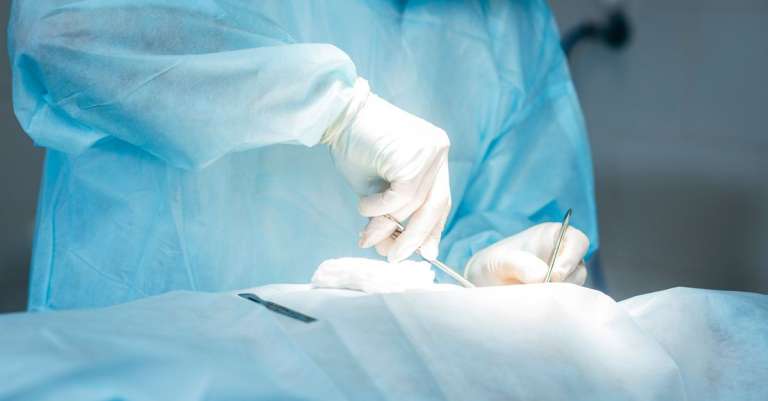In the USA, the first trial concerning the DePuy ASR hip replacement has begun. The case has been brought by Mr Loren Kransky in the Los Angeles court. Until now, many important internal DePuy documents have been held in secret but some are starting to come to light, as is the testimony of senior DePuy employees, and many of these have been seen by Pryers.
Pryers has been acting in the DePuy ASR cases for over two years and now represents over 300 UK patients who have suffered failure of the joint. The high failure rate; the damage it causes; and the reasons for that failure are well known to the firm. However, what is emerging from the US trial is how DePuy responded to reports of poor performance and safety concerns about the ASR.
Simulator tests
In June 2007, DePuy tested the ASR hip against its own Ultamet metal-on-metal hip product, also known as the Pinnacle. The components were put in hip simulators and moved through 5 million cycles. People are thought to put their hips through anything from 1 million to 4 million cycles per year. Volumetric wear is simply the amount of material that has come away from the component after a given number of cycles.
“Pass/Fail Acceptance Criteria
The acceptance criteria was set such that ASR should wear at a similar or lower rate than the Ultamet 36mm bearings…Total mean volumetric wear of the ASR bearing over 5M cycles was 2.52mm3 and 0.15mm3 for the Ultamet implants. Mean bedding in wear measured from 0- 1.5M cycles for ASR and Ultamet bearings was 1.96mm3 and 0.11mm3 respectively, while steady state wear from 1.5M to 5M cycles for ASR and Ultamet bearings was 0.24mm3 and 0.02mm3 respectively…The current results for ASR do not meet the set acceptance criteria for this test…M Hadley 26 June 2007”.
Therefore, in June 2007, more than three years before ASR was withdrawn in the UK, DePuy had their own test results to tell them that ASR wore about 17 times faster than their own Pinnacle product, yet they continued to sell and market the ASR.
Concern about metal ions
In 2008, Graham Isaac, DePuy’s Director of Hip Development, based in Leeds, emailed the company’s senior executives to express his concerns. Dr Isaac was intimately involved in the development and launch of the ASR. Indeed he had given a presentation to surgeons at which he claimed that an ASR would take 20 years to produce as much metal debris as the Birmingham Hip Resurfacing, the market leader, would produce in the first year of use.
In his email Dr Isaac said: –
“Yesterday we were given some clinical data which compares metal ion levels between BHR (Birmingham Hip Resurfacing) and ASR. In essence this shows that under certain conditions ASR is susceptible to extreme metal ion levels, whereas in the hands of the same surgeon BHR does not have the same problems…I believe that this data will appear in the journals in 2 parts in 6 months and 12 months and has the potential to seriously affect our business. We need to discuss this at the earliest possible opportunity as I believe it means what we need to start any ASR upgrade sooner than our previous plans had suggested.”
In his testimony, Mr Andrew Ekdahl, a marketing executive in charge of the introduction of ASR XL in the USA, said that he then consulted not with the company’s surgical or medical advisors, with their engineers, regulators or lawyers, but with the marketing department.
Incidentally, one of DePuy’s lawyers has suggested that Mr Kransky’s high levels of cobalt and chromium ions were perhaps the result of his exposure to the chemical Agent Orange during his Vietnam service. However, it is well known that cobalt and chromium ions leave the body and return to normal over a period of 12-18 months. Even if Agent Orange contained these metals and even if he had been exposed to it, it could not possibly account for his high levels over 40 years later.
Redesign of the cup?
Paul Berman, another senior DePuy marketing executive, expressed his view about reports of high metal ion levels in an email of 2nd May 2008: – “We will ultimately need a cup redesign but the short term action is manage perceptions”
In an e-mail of July 2, 2008, Mr Berman expressed his concern about sales representatives “telling surgeons DePuy is making an emergency change to the ASR cup. We must keep the ASR 2 project under total wrap, particularly in the U.S. where we will not make the change immediately. As expected, the competition will use this information against us….Lastly, I propose any future reference to ASR 2 is Project Alpha. Please be cognizant about who you discuss this project with, particularly outside the company.”
“Project Alpha” was a plan to design the cup by eliminating a groove on the inside so as to increase the arc of coverage. Many experts believe this would have succeeded in preventing failure due to excessive and premature wear. However, was later cancelled as it was said that “the business case for the project could no longer be justified and it was decided to halt development of the ASR II/ ALPHA cup”.
Recall of the product
Even in autumn 2009, when it was known that the Australian Joint Registry was about to publish very unfavourable results for ASR, the company decided not to undertake a worldwide recall but to withdraw the product only in Australia.
Around this time, internal emails show that a decision was to be made as to whether the product should be withdrawn immediately; in six months; or in six months but with some “key surgeon who are big cutters” continuing to use ASR. The DePuy analysis shows that this decision was to be made according to how many surgeons could be persuaded to move across to DePuy’s Pinnacle hip, rather than switching to another brand. The estimated cost of withdrawing ASR was put at $15 million dollars. To date, DePuy is said to have spent $800 million on the recall and faces litigation expected to cost the company in excess of $5 billion.
After withdrawing from the Australian market, DePuy continued to sell ASR in the UK and USA until August 2010, about a month before the publication of the annual National Joint Registry of England and Wales, which was also expected to show very poor results for ASR.
“Patient safety the top priority”
Even after the recall, even after all the reports of thousands of injured patients, Mr Ekdahl maintains that the product was withdrawn, not because he and the company were worried about patients’ safety, but for commercial reasons. “This was purely a business decision”, Mr Ekdahl has been quoted as saying. He has consisted rejected all claims that the ASR was withdrawn due to concerns about patient safety.
In a note sent to DePuy employees in February 2012, he said that DePuy “has made patient safety the top priority throughout the lifecycle of ASR”.
Mr Ekdahl is now president of DePuy Inc.





